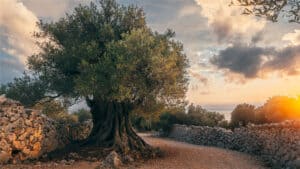Costa Rica is known for the diversity of its rainforests. While much of the attention goes towards the unique animals that can be found, like Basilisk lizards, red-eyed tree frogs and keel-billed toucans, there is also a wide range of amazing trees that make up the rainforests in Costa Rica. There are also beautiful native trees used in residential landscaping and local parks. Read on to find out all about 8 beautiful trees native to Costa Rica!
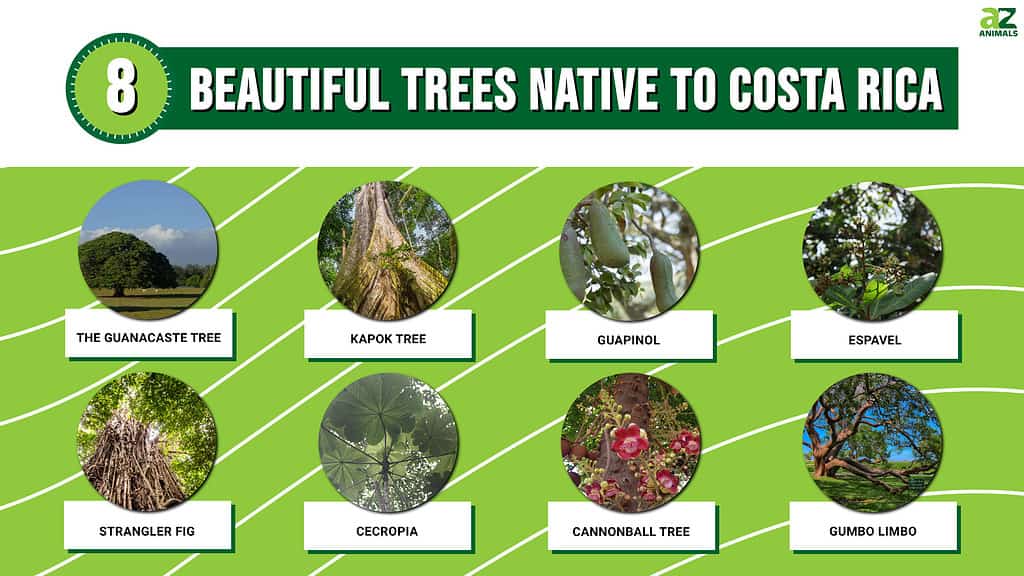
1. The Guanacaste Tree (Ear Tree)
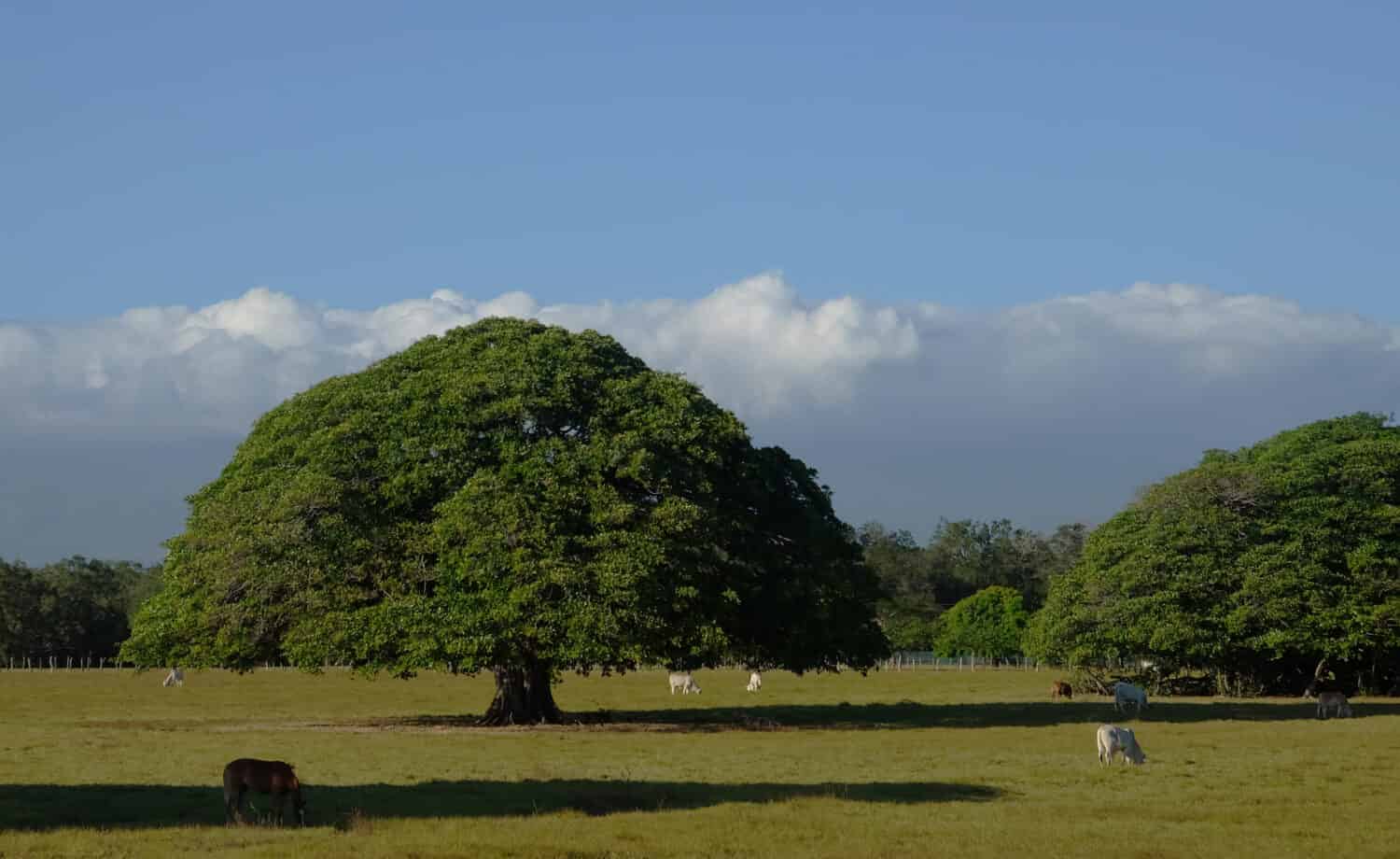
The Guanacaste tree is the national tree of Costa Rica.
©Raymond Pauly/Shutterstock.com
One of the most recognizable trees in Costa Rica is the Guanacaste tree (it is also the national tree!). One look at this massive tree and you can understand why it was chosen. The canopy of these trees form a wide umbrella shape that looks comparably huge to its trunk. Guanacaste trees can reach heights of more than 100 feet with some measuring nearly 165 feet. The other unique feature of this beautiful tree in Costa Rica is the seedpods. If you pick up one of the seedpods you will see why this tree is also called the “ear tree” or “monkey ear tree”. The seedpods are curved and shaped very similar to a human ear!
2. Kapok Tree (Ceiba Tree)
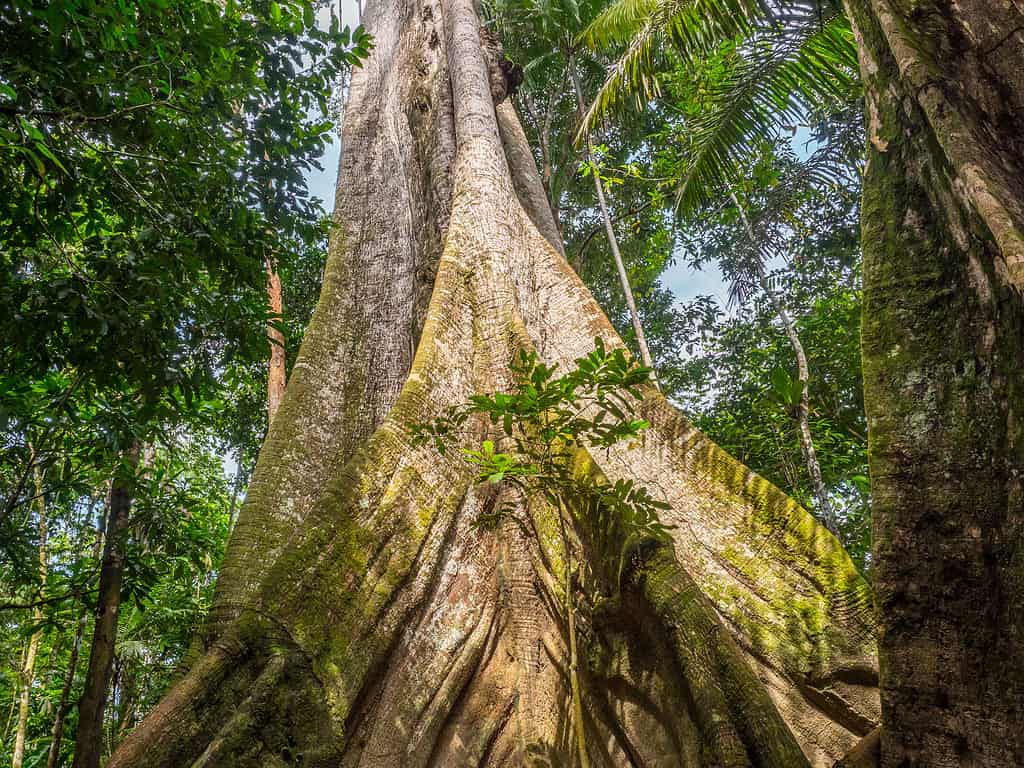
The Kapok tree is one of the tallest trees in the rainforest.
©Nowaczyk/Shutterstock.com
One of the tallest trees in Costa Rica is the beautiful Kapok tree. These are the trees you may see towering above the others in the rainforests, some as tall as 200 feet! The trunks of these trees are also quite impressive with some reaching 9-10 feet in diameter. Besides pink and white flowers the Kapok tree produces green pod-shaped fruit that cracks open to reveal fluffy cotton-like seeds. These seeds can be seen floating through the air covering everything in its path. That is why it is also sometimes called the silk-cotton tree.
3. Guapinol
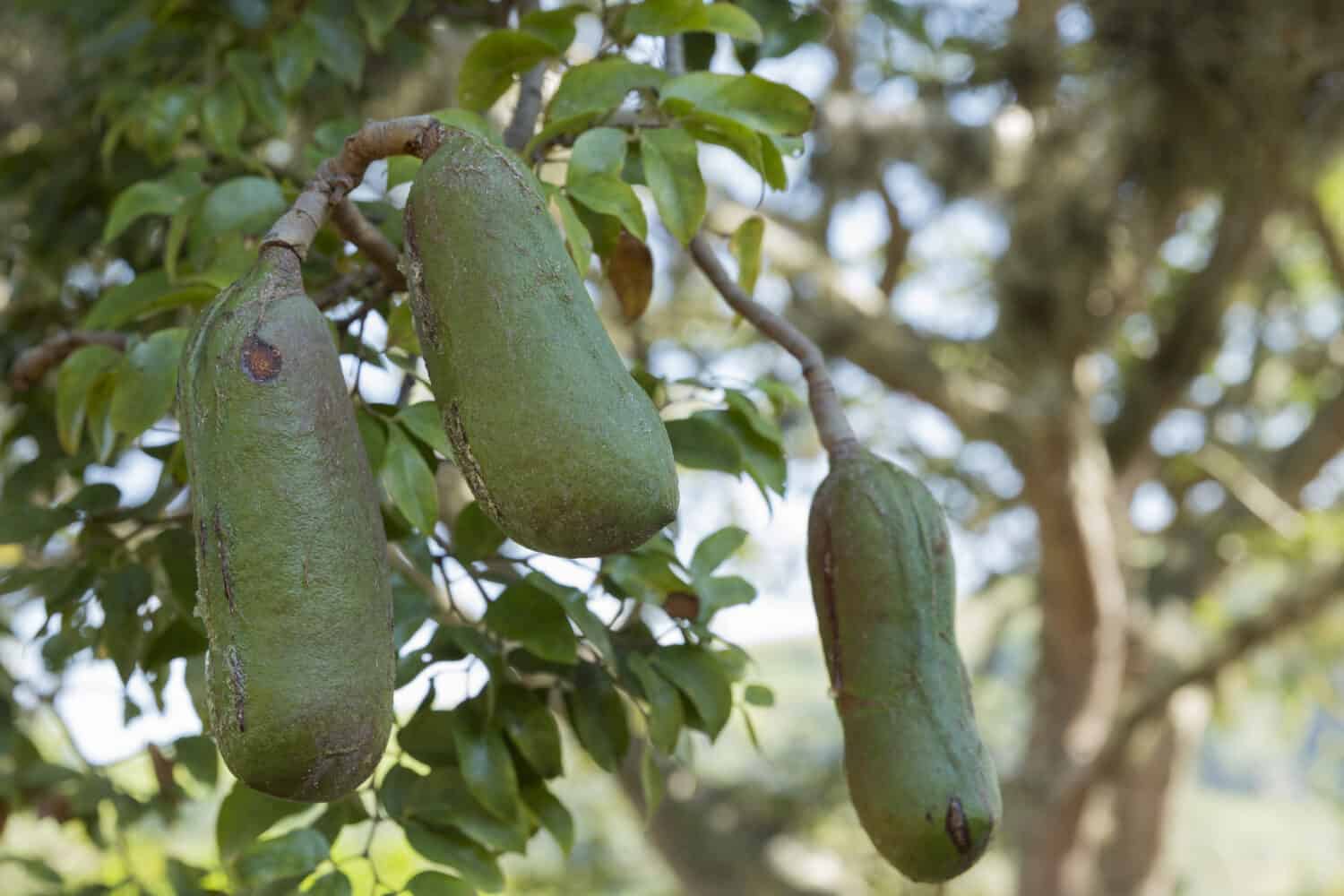
The fruit of the guapinol tree is hand-sized and a bit smelly.
©Olga Rincon Castellanos/Shutterstock.com
The Guapinol tree is a beautiful tree native to Costa Rica, but when it comes to smells, this is not sweet as a rose. In fact, it has the nickname of “Stinkingtoe”! The fruit of this tree is hand-sized with pulp that is eaten raw. Even though it smells bad, it actually tastes somewhat sweet. The wood of the Guapinol tree is valued due to its durability and hardness. Sometimes it is referred to as “Brazilian cherry” and is used to make kitchen cabinets, high-end furniture and as hardwood floors.
4. Espavel
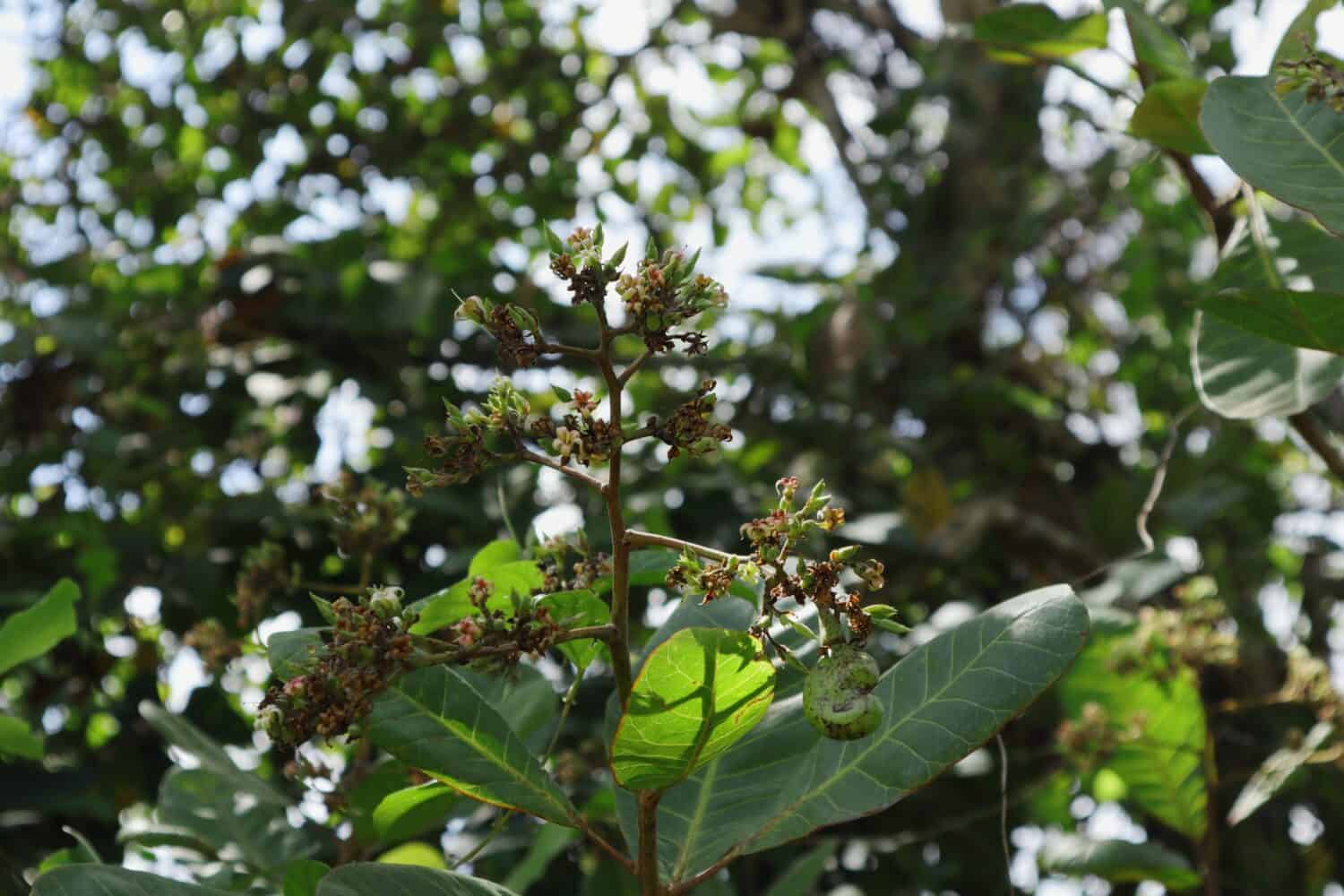
Another name for the espavel tree is the wild cashew tree.
©Pics Man24/Shutterstock.com
The Espavel tree is also called the “wild cashew” tree, but the fruit of this tree is more often consumed by animals than humans. The fruit is kidney-bean shaped and around 4 cm long, a special treat for the many squirrel monkeys that make Costa Rica their home. Espavel are taller than they are wide, so they are not umbrella shaped like the ear tree. They can get to be 130 feet tall which is a little taller than a 10-story building. The wood of the espavel tree is used to make bateas which are decorative wooden trays.
5. Strangler Fig
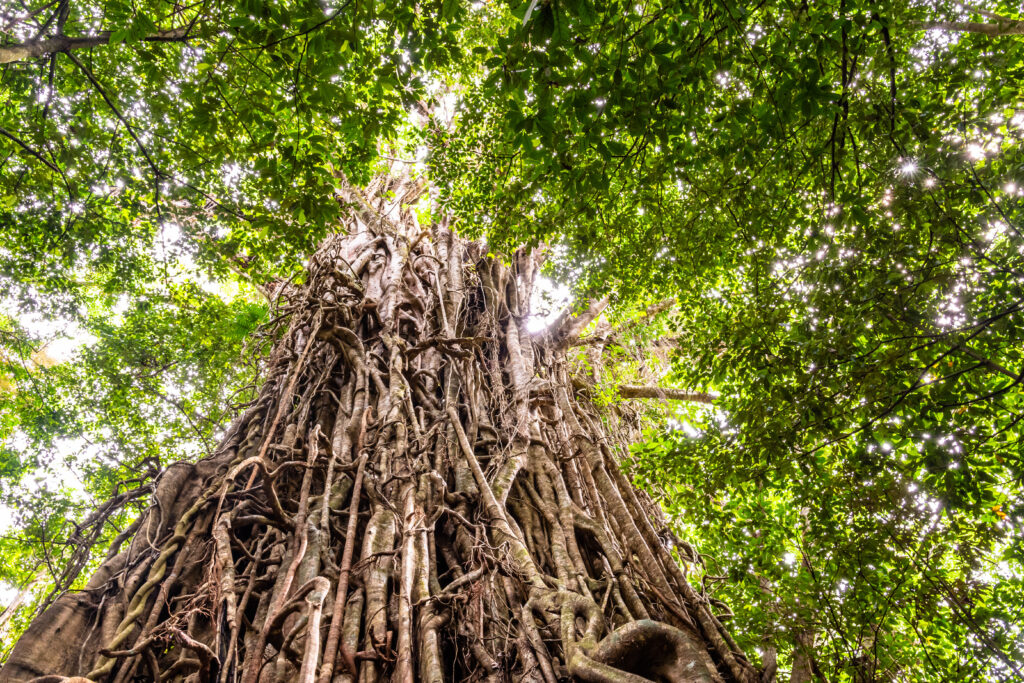
The strangler fig takes over its host tree with its tangled branches.
©Maurizio Callari/Shutterstock.com
The fast growing strangler fig actually starts growing in other trees and then grows roots. Seeds of the strangler fig get transported by animals to other trees where they latch on and begin to make themselves at home. They are adapted to start growing roots that travel down the host tree and eventually take root in the soil. This is good for the strangler fig, but not so good for the host tree that the strangler fig takes over. While the leaves of this tree are beautiful the fruit that falls can create quite the mess. Animals like birds and bats make their home amongst the twisting branches and enjoy the small bite-sized figs.
6. Cecropia (Trumpet Tree)
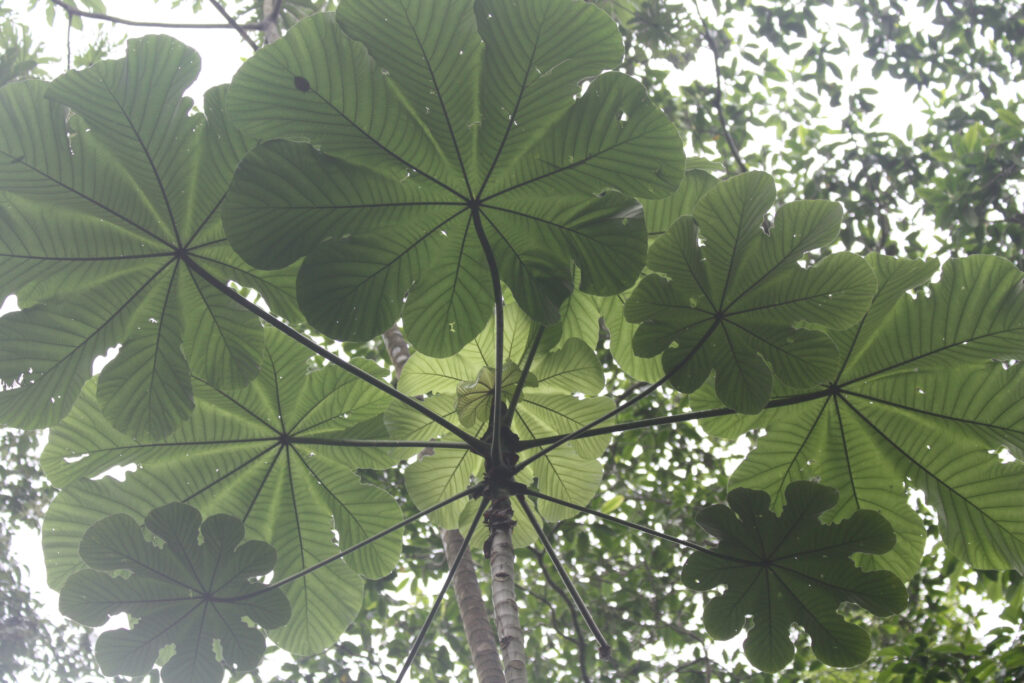
The pinwheel-shaped clusters of leaves make the cecropia very unique.
©SaraFallstrom/Shutterstock.com
The cecropia tree is a small tree that pops up in between other larger trees. It has light colored bark almost like a birch tree with large, elongated leaves grouped in clusters of 7-11. The fruit of the Cecropia grows in groups of long, finger-like fruit that is sometimes called gummy worm fruit due to its shape and gummy like substance. The tree itself has the nickname “Trumpet Tree” because of the elongated, colorful flowers that have a trumpet-like shape. Cecropia trees are some of the favorite trees for three-toed sloths. They eat the leaves and climb around the winding branches. Researchers in Costa Rica even studied the fitness of three-toed sloths based on the availability of cecropia trees and found sloths do quite well in forests with healthy cecropia trees.
7. Cannonball Tree
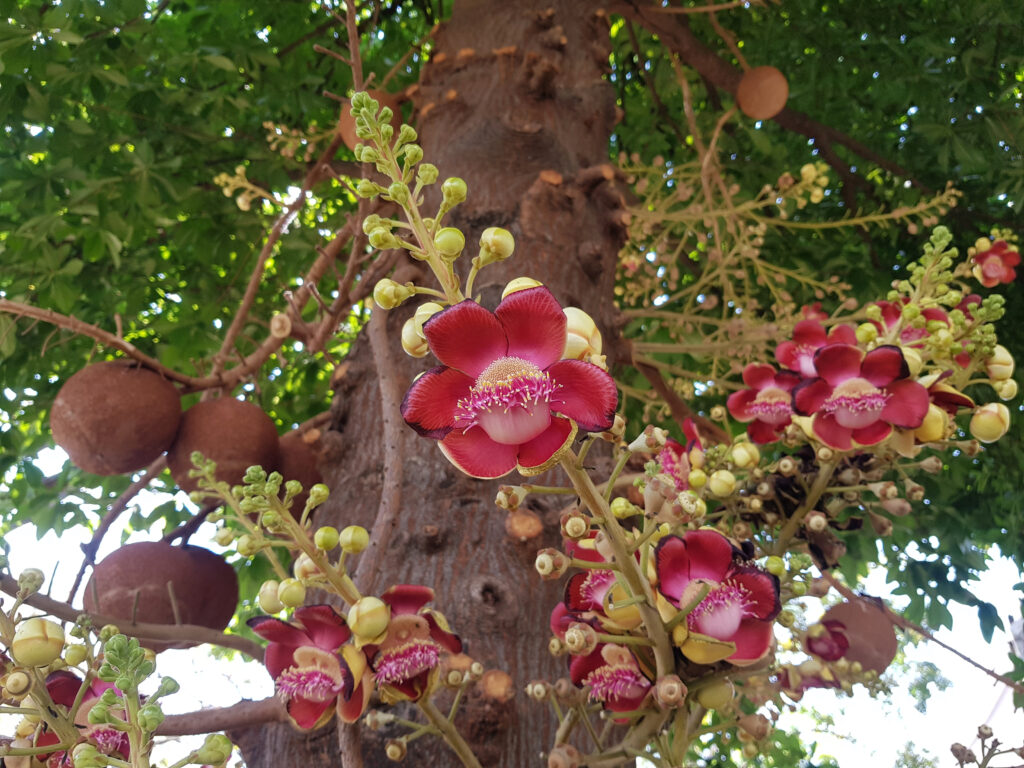
The cannonball tree is one of the most beautiful trees native to Costa Rica.
©Pollapat Thunbenjang/Shutterstock.com
One look at the cannonball tree and you will understand where it gets its name! Hefty cannonball shaped fruits hang from the tree in clusters. They look like coconuts, but be warned, they certainly don’t smell like coconuts. When they crack open they emit a foul smell. The flowers of the cannonball tree are what make it one of the most beautiful native trees of Costa Rica. The large blooms dangle around the trunk in a mix of colors; pinks, oranges, yellows and reds. The center of the flower resembles a tiny sea anemone with yellow tipped stamens, it definitely stands out from surrounding vegetation.
8. Gumbo Limbo
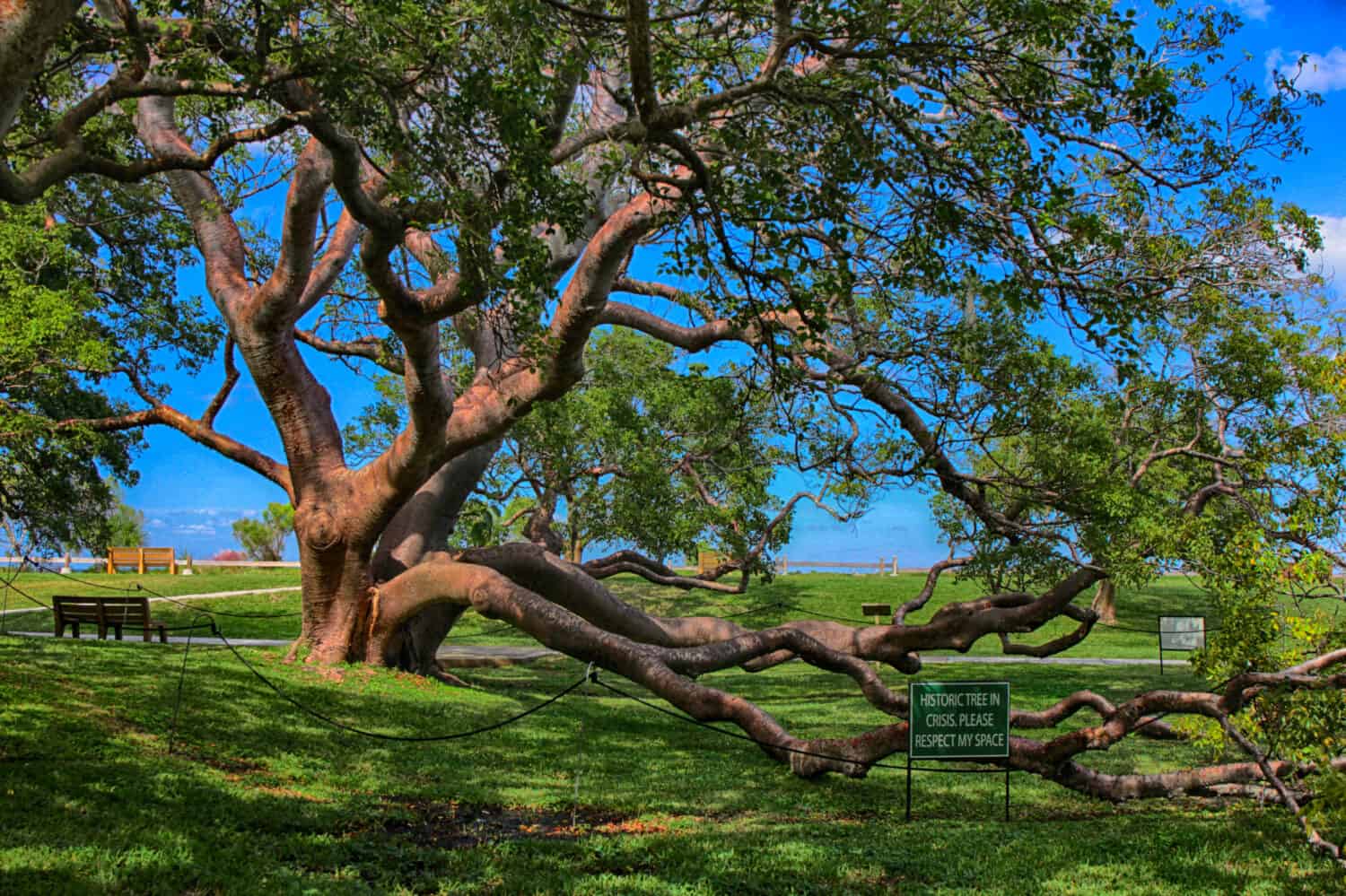
Gumbo limbo trees can get to be 30-50 feet tall.
©Lisa Cohen/Shutterstock.com
The sprawling gumbo limbo tree has winding branches that twist and turn in unique directions. The bark of the tree is reddish in color and peels back giving the trunk and branches some texture. The canopy of the tree has beautiful green foliage that forms a rounded top. Not overly large, the gumbo limbo is usually in the 30-50 feet range. The flowers of the gumbo limbo tree are not showy, just small greenish blooms and the fruit is small ½ inch berries. Butterflies, bees and birds are attracted to these trees for the flowers and the fruit. Because the Gumbo Limbo tree grows close to the ground they are used in landscaping along the fence lines of people’s homes. They are truly a beautiful native tree of Costa Rica!
Summary of 8 Beautiful Trees Native to Costa Rica
| Number | Tree | Scientific Name |
|---|---|---|
| 1 | The Guanacaste Tree (Ear Tree) | Enterolobium cyclocarpum |
| 2 | Kapok Tree (Ceiba Tree) | Ceiba pentandra |
| 3 | Guapinol | Hymenaea courbaril |
| 4 | Espavel | Anacardium excelsum |
| 5 | Strangler Fig | Ficus aurea |
| 6 | Cecropia (Trumpet Tree) | Cecropia peltata |
| 7 | Cannonball Tree | Couroupita guianensis |
| 8 | Gumbo Limbo | Bursera simaruba |
The photo featured at the top of this post is © Raymond Pauly/Shutterstock.com
Thank you for reading! Have some feedback for us? Contact the AZ Animals editorial team.




